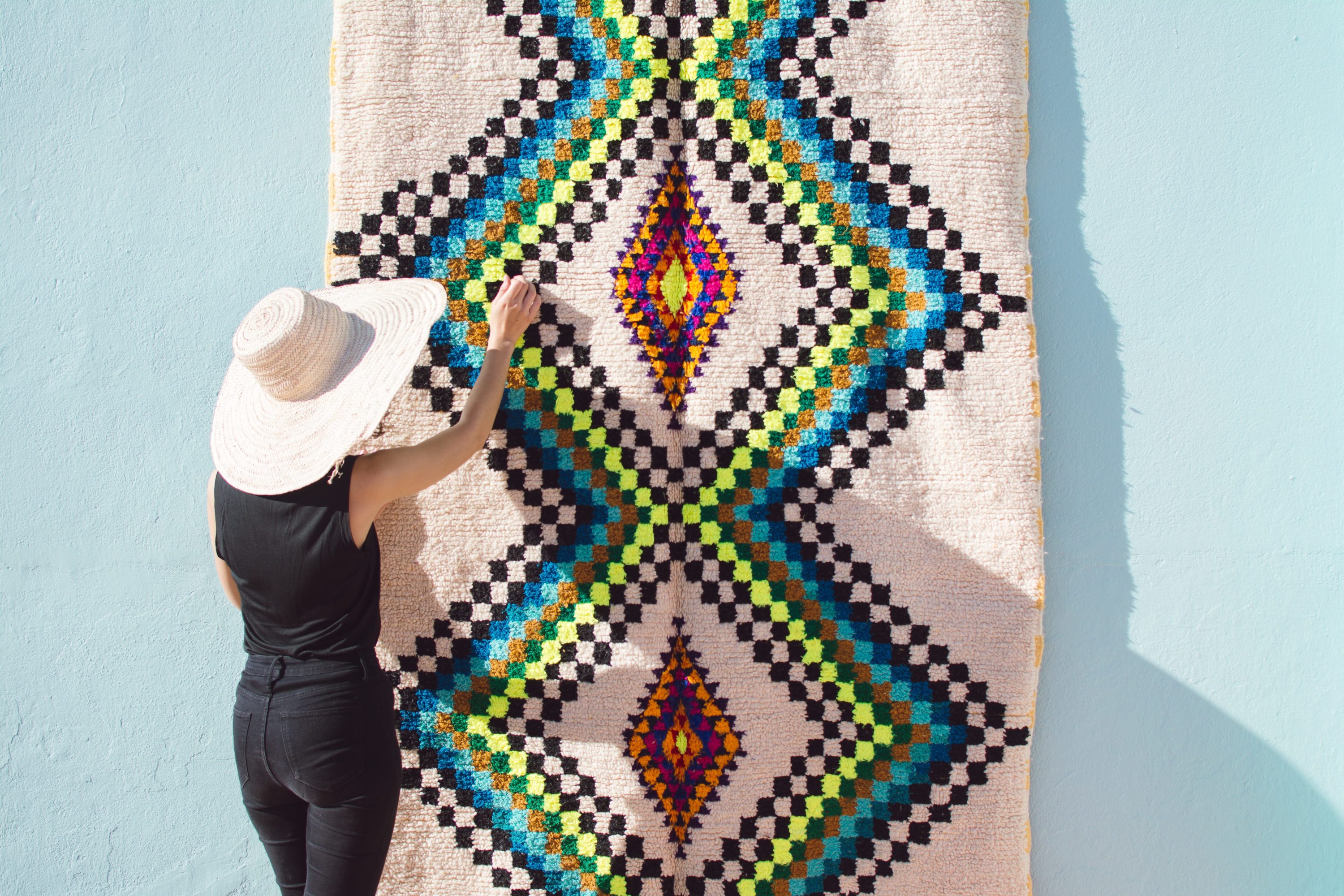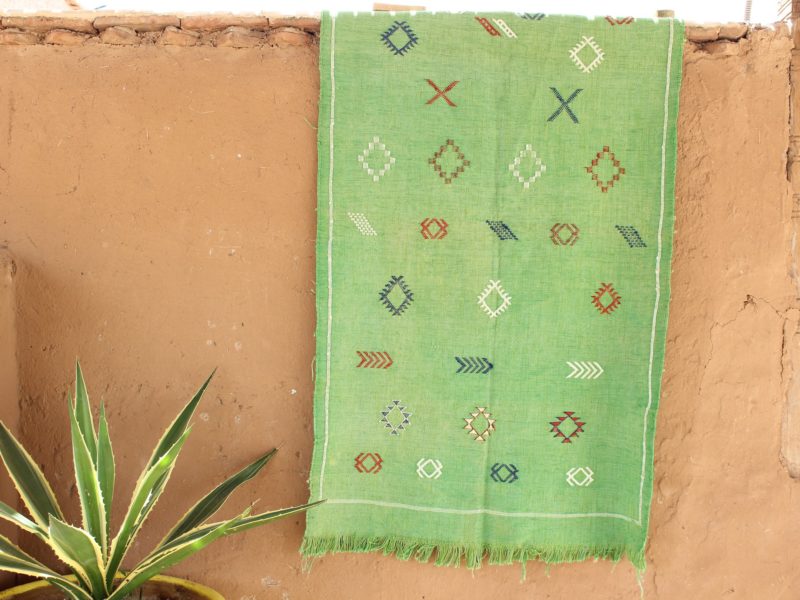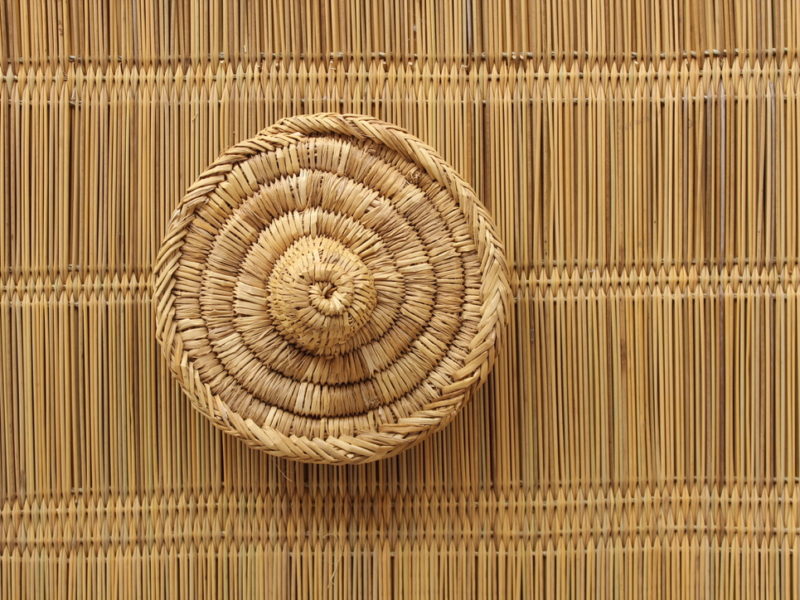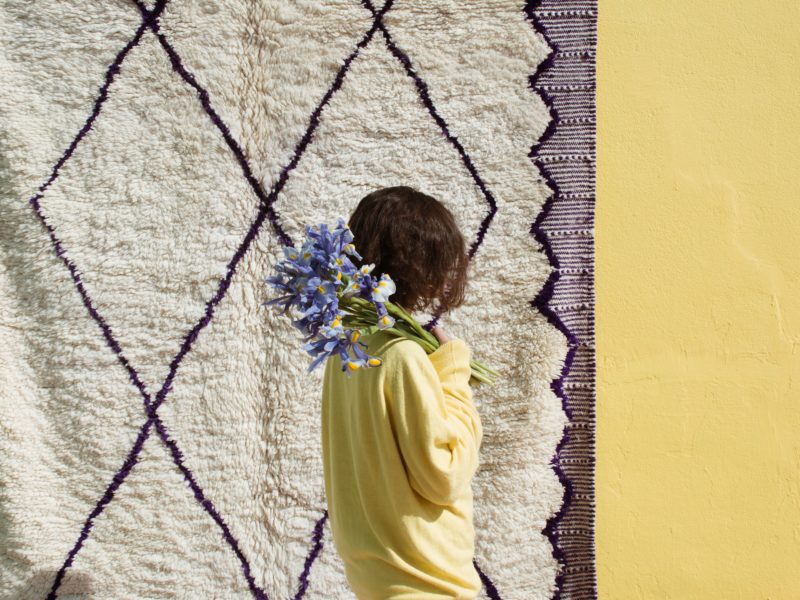Azilal carpet: the berber carpet with a thousand colors
Before being the name of a category of Berber carpets, “Azilal” is first the name of a region of the High Atlas in Morocco, south of Beni Mellal and 330 km from Marrakech.
Original creations pleasantly colored, with lively and dynamic lines, which do not fail to associate very warmly with contemporary interiors, Azilal carpets are the fruit of an artistic work, laborious and valuing women of this region. Tribaliste reveals everything about this precious Berber carpet, from its creation in the cradle of the Berber civilization in Morocco, to its inscription in modern Western decoration.
The Azilal region and its know-how
On the national road leading from Marrakesh to Beni Mellal, called the Sultan Road, taken by Lyautey in 1923 to dislodge the Zayane tribes, lies the province of Azilal. With the Ait Boguemaz valley as its epicenter, also known as the “valley of happy people”, the Berber tribes of the Azilal region include Ait Soukhman and Abdi Ait Said, to name but a few.
Known for its lush landscapes, the province of Azilal, at an altitude of 1351 meters, attracts more and more visitors, especially during the summer. With a mild summer climate, harsh and cold in winter, the women of the Berber tribes of Azilal have knotted carpets since the beginning of the last century to counter the very cold temperatures of the cold seasons. Once knotted, the carpets serve as woolen mattresses for all families in this rural area.
Far from a mass production, it is with originality that the women of Azilal weave each Berber carpet in a traditional way, following traditions passed down from mother to daughter through several generations. Brightly colored irregular patterns on a creamy white background, the Azilal rug is crafted from raw, raw wool, plus tinted wool, recycled fabrics or cotton yarns to enhance the pattern. . In addition to its slimmer wool than that of the Beni Ouarain rug, the Azilal is distinguished by the alternation of a knotted woolen line and two lines woven by fishnet delicately intertwined lines. This know-how, which is lost over generations, reinforces the value of these unique pieces.
Beyond the making process, Azilal carpets are works where the weavers of the region of Azilal tell their story through the patterns adorning the purity of the white of the base wool. They appropriate the tribal signs of their ancestors and the Berber alphabet to recount their daily life as rural women. The themes of these arabesques revolve around rural life, fertility, motherhood, birth and marriage. The Berber carpet of Azilal can also be the result of a series of discontinuous geometrical shapes which evolve according to the inspiration of the weavers. Abstract and irregular, they give the Azilal carpet a unique and exceptional appearance.
This artisanal work has always been rewarding for women weavers because their finished product helps protect their families from harsh winters, but also turns it into a source of income by selling it.
The Azilal carpet, from the Berber element to the decorative design object
Today adulated and sought to adorn the most design interiors, Azilal carpets are known for the aesthetic pleasure they provide. The colors for the old carpets were made with natural pigments such as saffron, henna or pomegranate. Today, they can be either natural or pigmented with artificial dyes.
On a neutral color wool, often white, cream or beige, are added geometric patterns generally symmetrical bright colors, even fluos from pink to green through yellow … With an average weight of 2.7 kg on square meter, the Azilal carpet inspires both a sustained and sober style that a relaxed atmosphere.
Fine first of all by their material, the suppleness of their contours, the luminosity of their natural hues and the harmony of their designs, they come to accord with the most natural facilities to modern and contemporary decorative styles. Azilal carpets can complement your living room or nursery, just like decorating your hallway or hall. They are modest in size, from 1 to 2 square meters, and can be turned into wall art.
Fine finally because they bring warmth and voluptuousness to your home, they know how to assert their character despite their alienating cousin with Beni Ouarain carpets.
Azilal carpets are also often associated with carpets named Ourika, which are produced a little further south by the Berber tribes of the High Atlas Mountains from Demnate in the north to Imlil in the south covering the mountainous region of Ait Ourir, the Ourika Valley and the Oukaimeden Park.
Discover the Tribalist collection of Azilal carpets, pieces full of history and tradition, and add light and elegance to your interior.



